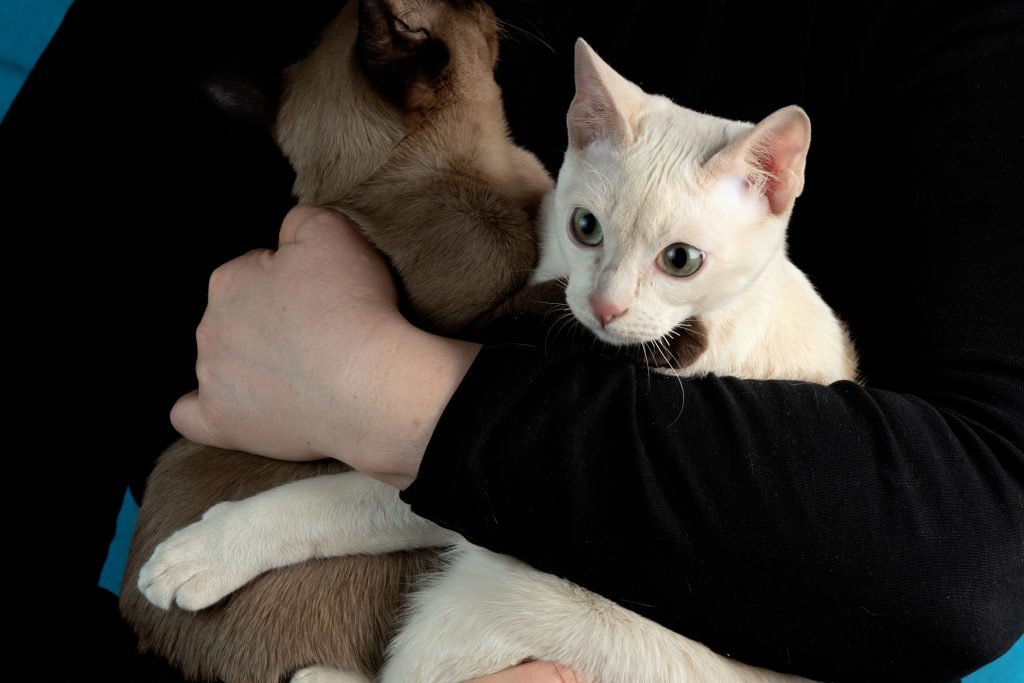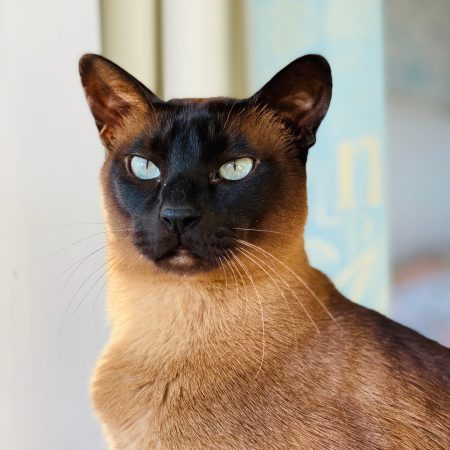The history of the Tonkinese cat breed
The history of the Tonkinese cat began in Burma, where Dr. Joseph C. Thompson spotted “Wong Mau”, the first Tonkinese of its kind, and took her back to the US with him. Cat lovers there initially thought they were looking at a darker coloured Siamese cat – and, indeed, there is a certain resemblance! Breeders in America largely favoured Burmese characteristics. Since the 1980s, however, the British have also been breeding Tonkinese cats. These have the original appearance of the Tonkinese Wong Mau, which requires the crossbreeding of Siamese and Burmese cats.
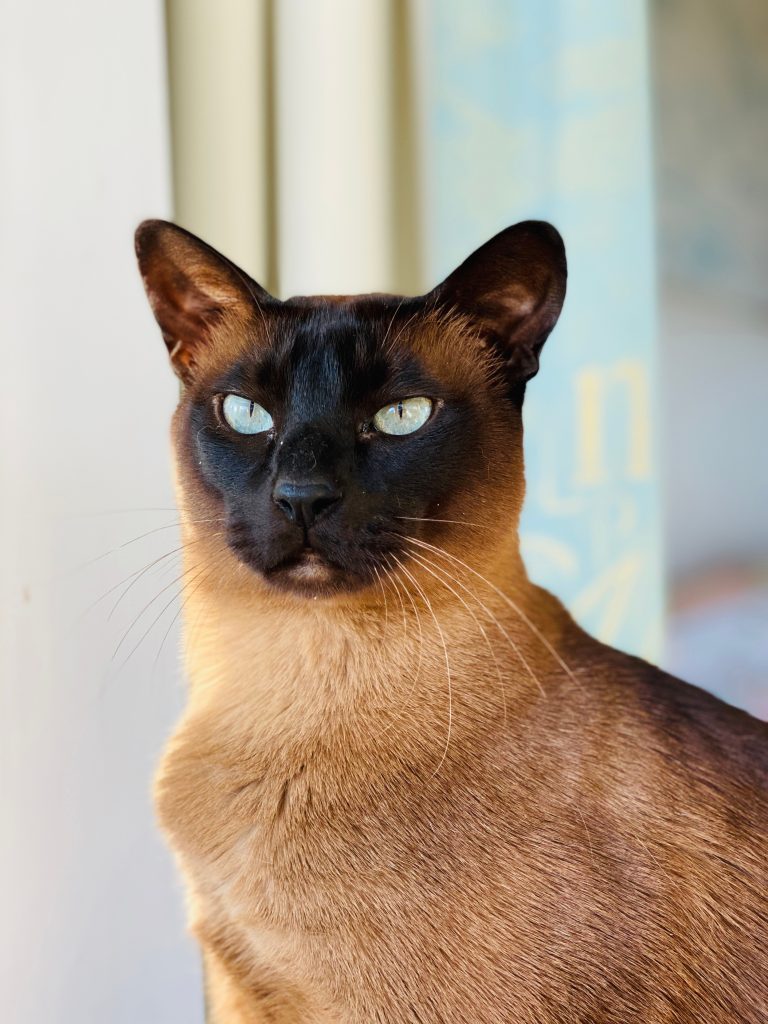
Appearance of the Tonkinese
What do Tonkinese cats look like? Tonkinese cats are among the rather rare breeds of cat. And that’s a pity, because their extravagant appearance and great character have delighted many feline fans who’ve gotten to know them. It’s a great mix – Siamese and Burmese – and Tonkinese cats combine the appearance of both breeds in a very appealing way. They are muscular and strong like Burmese cats, yet also long and slender like the Siamese! Their heads, however, are not round but wedge-shaped. Their whisker pads are very prominent and their muzzle is slightly flattened.
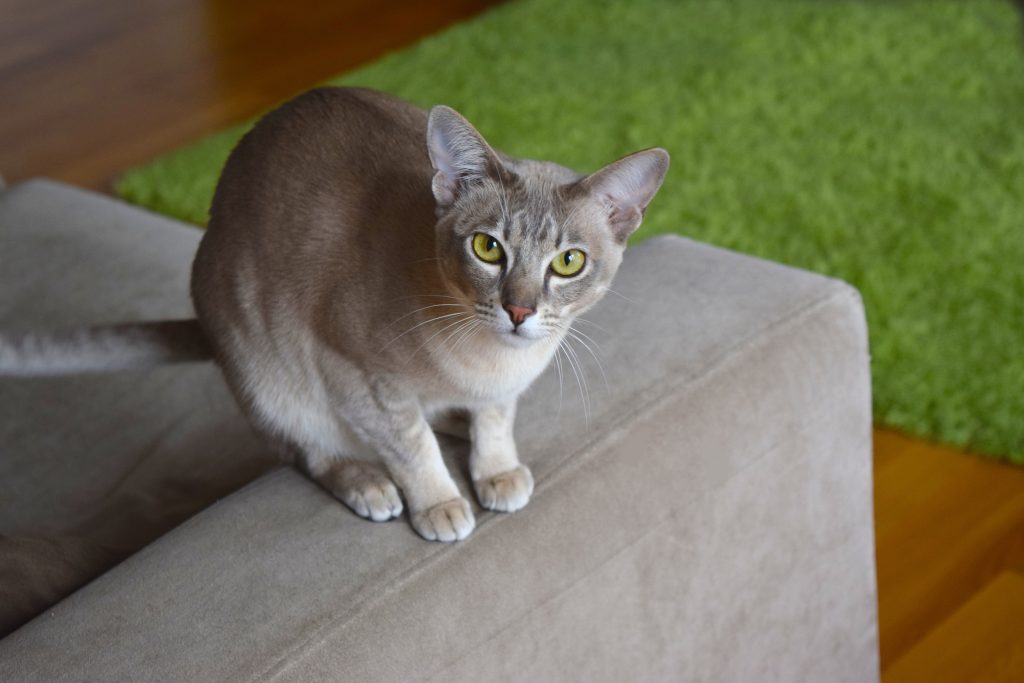
Tonkanese size
How big does a Tonkinese cat get? With an average shoulder height of 25 to 35 cm and a body length of 90 to 100 cm – measured from the tip of the nose to the end of the tail – Tonkinese are considered to be medium-sized cats. The physique of the males is inherently larger and more muscular than that of the females.
Weight of the Tonkinese cat
Tonkinese females are somewhat more graceful and slender in build. When fully grown, they weigh about 3.0 to 4.0 kg. Tonkinese males, on the other hand, are heavier and more powerfully built. Due to their more muscular bodies, they usually weigh more than their female counterparts: when they step on the scales, they see numbers ranging from 4.0 to 5.0 kg.
Coat of the Tonkinese cat
Tonkinese cats are a short-haired breed. The fur of a Tonkinese is close to its body and feels silky soft when petted. Even though this breed has hardly any undercoat, their coat still requires a few grooming sessions. Aside from shedding season, once a week is absolutely sufficient.
Coat colour
Tonkinese are an aesthetic mix of Burmese and Siamese cats – and so is the colour of their coat! Tonkinese alsocome in all imaginable colours, just like those two cat breeds. Tonkanese, however, have flowing markings that aren’t as clearly defined as in Siamese cats. The colours of their coats are usually somewhat darker.
Coat length
How long is the fur of a Tonkinese cat? Cats of this breed have short coats. When spring approaches, however, they get thinner coats, just like long-haired cats. Out with the old hair and in with the new. Indoor cats can also lose hair all year round, even without a change in temperature – sometimes even more than outdoor cats.
Coat patterns
In addition to their great variety of colours, Tonkinese cats also have a wide range of fur patterns: they can have all the basic colours in mink, point, solid and tabby. In other words, they can have an incredible variety of unique coat patterns and an infinite number of variations. It’s an enchanting mix that makes each one of them unique in a very individual way.
Eyes of the Tonkinese Cat
Tonkinese cats have very expressive eyes. Rather than being round, they’re shaped like almonds. Their eye colours vary depending on their coat pattern: Tonkinese cats with point markings, for example, have dark blue eyes, whereas those with mink markings have aquamarine eyes. Tonkinese cats with solid colour markings can have eyes that are either yellow or green.
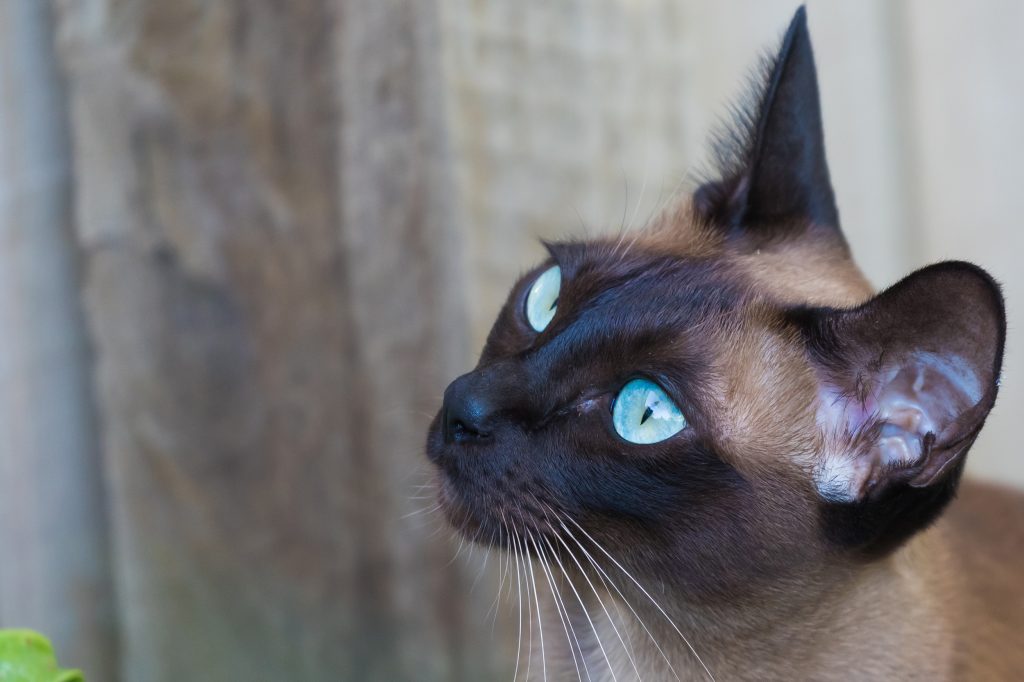
Special features of the Tonkinese
There are many different reasons why the colour of a cat’s coat can change, such as temperature changes, nutrition or age. In Tonkinese cats, this happens all the time: When Tonkinese kittens are born, they have a very light coat colour, but when they get older, their coat “darkens”. In fact, the older they get, the darker their coat. In a sense, one can conclude the age of these kitties based on their colouring. Again, the older the kittens, the darker their coat.
Characteristics of the Tonkinese
Some Tonkinese kittens had beautiful shiny coats, darker markings and a rich brown colour – they looked a bit like mini minks. For this reason, the breeders called this colouring and these markings “natural mink”, which is how this special feature got its current name: “mink”. One of the most popular is “natural mink”, but there’s also “champagne mink”, “blue mink” and “platinum mink”.
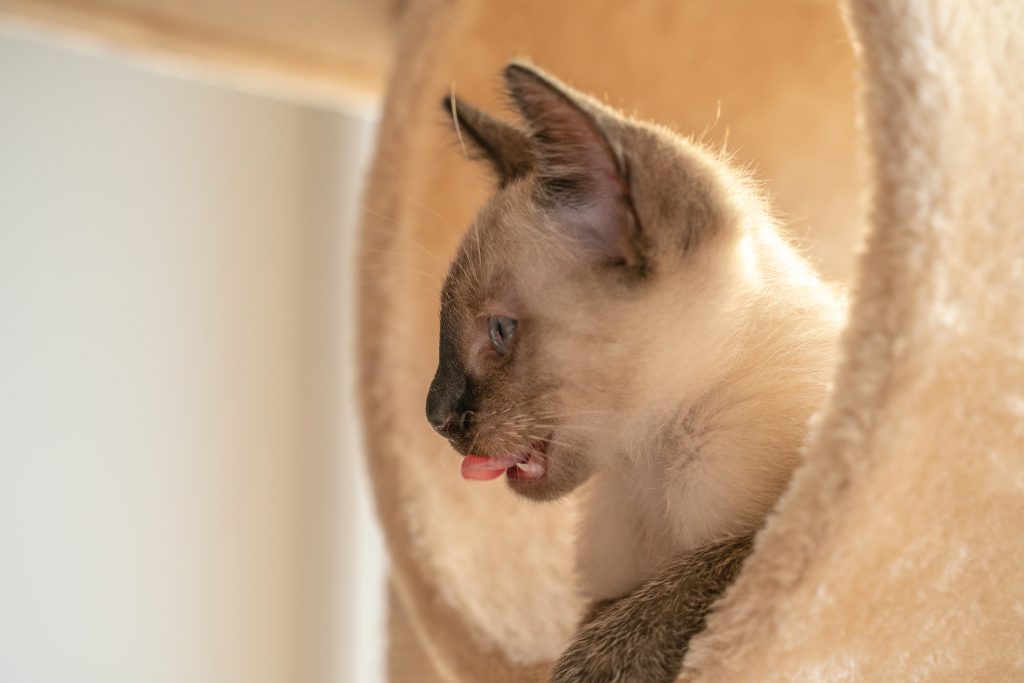
Character of the Tonkinese
In terms of character, Tonkinese are perfect for cat lovers who prefer to have their cats around all the time. Tonkinese are very affectionate! They’re fixated on their favourite human and want to actively participate in family life. As these cats are very open-minded and exceedingly intelligent, they learn quickly. Sometimes they even learn to do things you wouldn’t expect: for example, opening doors. A bedroom door or refrigerator door is no problem for a Tonkinese!
Source: Tokanese – Lebhaft und Anhänglich (Die Tonkanese Katze im Rasseporträt) , [YouTube-Video.], 20.12.2021, #die #katzenrassen, Tonkanese – Lebhaft und Anhänglich (Die Tonkanese Katze im Rassenportrait) – YouTube accessed 25.04.2022
Price of the Tonkinese
A person who acquires a purebred Tonkinese will expect the cat to have the specific features and character traits that distinguish the breed. The average price for a Tonkinese from a reputable cattery is around €800 to €1,200. Prices can vary greatly depending on the breeder. Don’t forget: the cheapest offer is not necessarily the best.
The breeding of the Tonkinese
The breeding of Tonkinese cats is demanding due to their unique genetics. Indeed, the heredity of certain traits of theirs is neither dominant nor recessive, but rather intermediate. This means that if two Tonkinese cats mate, the genetic result can be Burmese, Siamese but also Tonkinese kittens, possibly all with quite different characteristics.
Important information on keeping and caring for Tonkinese
The Tonkinese’s short coat is extremely easy to care for. It has hardly any undercoat and doesn’t get very dirty, so daily coat care isn’t necessary. Still, when shedding season approaches, the situation looks a bit different. If your Tonkinese has lots of loose hairs due to shedding, simply remove them with a damp cloth. After that, you can comb your cat with a fine comb.
The Tonkinese Kitten
When Tonkinese kittens are born, they’re often still very light in colour. It’s only after a few days that their coat gradually starts to darken. In other words, at the beginning it’s difficult to predict what their exact colour will be – every kitten is a surprise package on four paws! You won’t know their ultimate colour until they’re two years old.
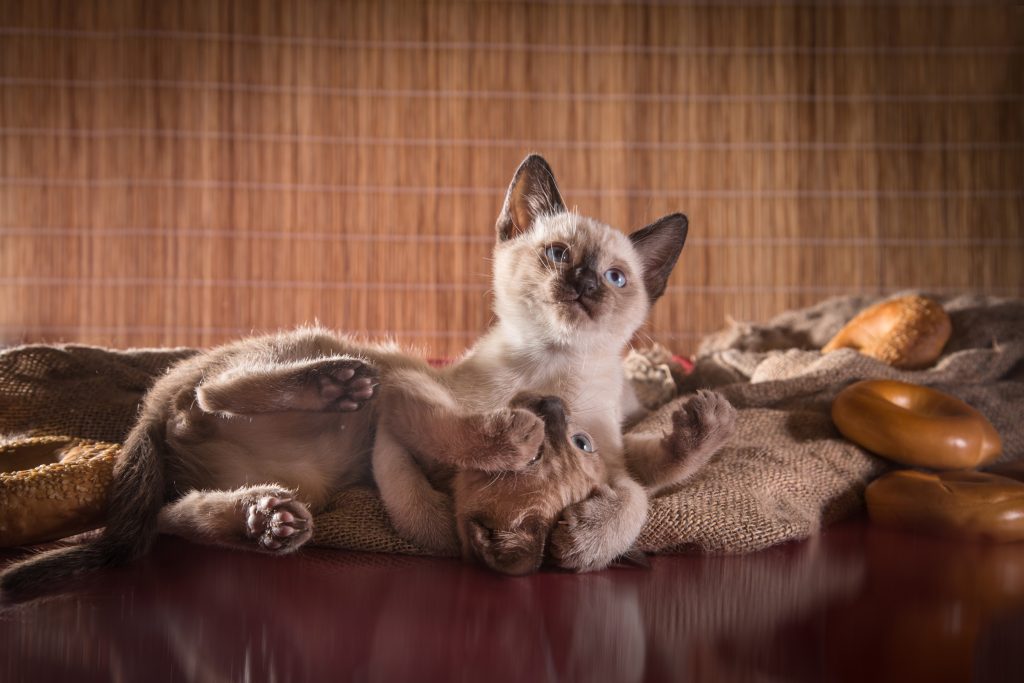
Typical diseases of Tonkinese cats
Are there typical diseases associated with Tonkinese cats? Tonkanese cats are generally no more susceptible to certain diseases than any other cat breed. To date, there are no health problems known to be specific to them. But of course they can still get sick! An annual trip at the veterinarian to check on their heart and kidneys and get all necessary vaccinations is therefore also recommended for Tonkinese.
Life expectancy of Tonkinese cats
How old do Tonkinese cats get? With an average life expectancy of 15 to 18 years, Tonkinese cats live quite long. Eighteen cat years are equivalent to 88 human years! Still, we can never be sure just how long a cat will live. It depends on many different factors. Unfortunately, a cat’s life cycle is much shorter than our own. But at least that means we get to enjoy them from the time they’re kittens to the time they reach old age.
